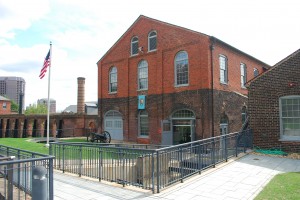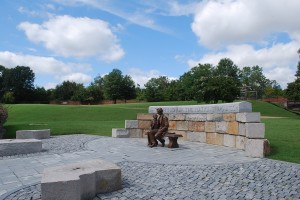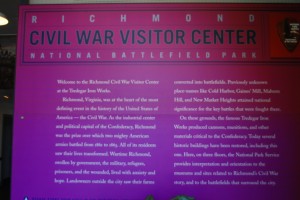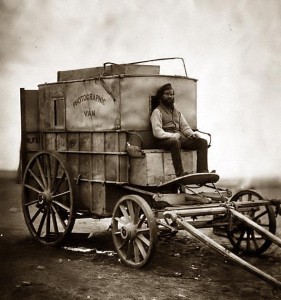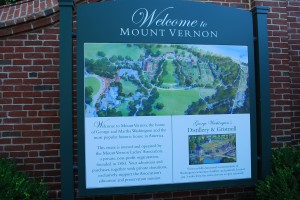 After a week-end in Northern Virginia for a meeting in Fairfax, it was such a beautiful day, clear, cool, huge puffy white clouds floating by, we decided to make a quick visit before returning to the Eastern Shore to nearby Mount Vernon, George Washington’s, famous ancestral home, which I had not visited in eons. ( Let me say again, for the umpteenth time, one of the great things about living on the Eastern Shore of Virginia is how close the Shore is to so many other places of interest, to-wit only four and a half hours from home to the heart of the metro area of our nation’s capitol. ) Our “quick visit” turned into a 6 hour tour, we could have easily spent twice 6 more and still not have properly seen everything Mt. Vernon has to offer. George Washington wrote of his beloved Mt. Vernon ” No estate in United States is more pleasantly situated than this. It lies in a high, dry county… on one of the finest Rivers in the world… It is situated in a latitude between the extremes of hot and cold… with road roads and the best navigation from the Federal City, Alexandria and George Town…” And to navigate places, Washington had his “riding chair”, what an interesting contraption, and his coach, one of only 50 in the entire state of Virginia at that time.
After a week-end in Northern Virginia for a meeting in Fairfax, it was such a beautiful day, clear, cool, huge puffy white clouds floating by, we decided to make a quick visit before returning to the Eastern Shore to nearby Mount Vernon, George Washington’s, famous ancestral home, which I had not visited in eons. ( Let me say again, for the umpteenth time, one of the great things about living on the Eastern Shore of Virginia is how close the Shore is to so many other places of interest, to-wit only four and a half hours from home to the heart of the metro area of our nation’s capitol. ) Our “quick visit” turned into a 6 hour tour, we could have easily spent twice 6 more and still not have properly seen everything Mt. Vernon has to offer. George Washington wrote of his beloved Mt. Vernon ” No estate in United States is more pleasantly situated than this. It lies in a high, dry county… on one of the finest Rivers in the world… It is situated in a latitude between the extremes of hot and cold… with road roads and the best navigation from the Federal City, Alexandria and George Town…” And to navigate places, Washington had his “riding chair”, what an interesting contraption, and his coach, one of only 50 in the entire state of Virginia at that time.
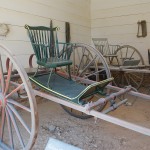
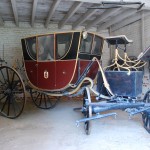

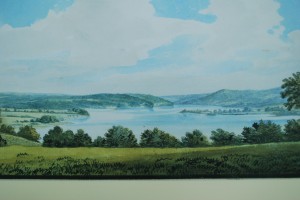 According to the guidebook, at George Washington’s funeral he was eulogized by his dear friend, Henry Lee, ( the father of Robert E. Lee ), as being “First in war; first in peace; and first in the hearts of his countrymen.” I think to that could have been added “first in agriculture” because agriculture in all its forms, from grain farming as a cash crop, horticulture, orchards and gardens to wine and whiskey production, if it could be raised on his own dear lands, it was a Washington life long deep passion. The original 2000 acres of Mt. Vernon had been owned by the Washington family since the mid-1600’s but by the time of his death, Washington had purchased a great deal of additional adjoining acreage, expanding the estate to over 8,000 acres, all actively farmed, with Washington himself the maestro, directing it all. He was a real leader in the progressive farm movement. Totally hands on, by experiment, through trial and error, he tested innovative methods that seem commonplace today but which were considered novel and radical land husbandry ideas at that time.
According to the guidebook, at George Washington’s funeral he was eulogized by his dear friend, Henry Lee, ( the father of Robert E. Lee ), as being “First in war; first in peace; and first in the hearts of his countrymen.” I think to that could have been added “first in agriculture” because agriculture in all its forms, from grain farming as a cash crop, horticulture, orchards and gardens to wine and whiskey production, if it could be raised on his own dear lands, it was a Washington life long deep passion. The original 2000 acres of Mt. Vernon had been owned by the Washington family since the mid-1600’s but by the time of his death, Washington had purchased a great deal of additional adjoining acreage, expanding the estate to over 8,000 acres, all actively farmed, with Washington himself the maestro, directing it all. He was a real leader in the progressive farm movement. Totally hands on, by experiment, through trial and error, he tested innovative methods that seem commonplace today but which were considered novel and radical land husbandry ideas at that time.
 Such concepts as deep plowing to reduce erosion and create healthier root zones, the addition of soil amendments such as manure and lime, the planting legume cover crops to enrich the soil, the rotation of crops, the planting in furrows rather than just scattering seeds across the land, all these now accepted land management concepts were not just brand new, they were still unproven, likely controversial, practices in Washington’s day. These revolutionary new farming methods were utilized on his farms starting in the mid-to-late 1700’s yet most are still accepted agricultural concepts 200 + years later. In addition, Washington established a very successful rye and corn whiskey distillery, one of the most successful of its time, producing over 10,000 gallons of “liquid gold” per year in its heyday, no doubt enabled by his very successful grain farms which produced the corn and rye. Time got away and we didn’t visit the distillary but it is still modestly active and is the gateway to The American Whiskey Trail. ( It turned out 900 bottles of whiskey last year to be sold at the gift shop, which was, of course, totally sold out, maybe more in November according to the clerk. But I’m assuming they saved back a few bottles because on Aug. 3rd, Mt Vernon is sponsoring a dinner event called Gentleman Distiller: Whiskey Tasting and Dinner at the Distillary. )
Such concepts as deep plowing to reduce erosion and create healthier root zones, the addition of soil amendments such as manure and lime, the planting legume cover crops to enrich the soil, the rotation of crops, the planting in furrows rather than just scattering seeds across the land, all these now accepted land management concepts were not just brand new, they were still unproven, likely controversial, practices in Washington’s day. These revolutionary new farming methods were utilized on his farms starting in the mid-to-late 1700’s yet most are still accepted agricultural concepts 200 + years later. In addition, Washington established a very successful rye and corn whiskey distillery, one of the most successful of its time, producing over 10,000 gallons of “liquid gold” per year in its heyday, no doubt enabled by his very successful grain farms which produced the corn and rye. Time got away and we didn’t visit the distillary but it is still modestly active and is the gateway to The American Whiskey Trail. ( It turned out 900 bottles of whiskey last year to be sold at the gift shop, which was, of course, totally sold out, maybe more in November according to the clerk. But I’m assuming they saved back a few bottles because on Aug. 3rd, Mt Vernon is sponsoring a dinner event called Gentleman Distiller: Whiskey Tasting and Dinner at the Distillary. )
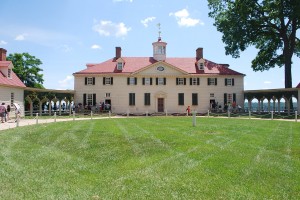 Since Washington was one of the most wealthy and prominant men of his time, as expected, the mansion itself is magnificent. But we were surprised to learn that the exterior siding, which appears to be stone, was actually wood siding, beveled to look like stone and then “rusticated”, meaning that sand was applied to the paint while still wet, giving it a look and feel of stone which was a prohibitively expensive building material, although “rusticating” itself was quite expensive as well. Back in the day, apparently Washington made Virginia’s most extensive use of this technique in his quest to make Mt. Vernon one of the country’s very finest estates.
Since Washington was one of the most wealthy and prominant men of his time, as expected, the mansion itself is magnificent. But we were surprised to learn that the exterior siding, which appears to be stone, was actually wood siding, beveled to look like stone and then “rusticated”, meaning that sand was applied to the paint while still wet, giving it a look and feel of stone which was a prohibitively expensive building material, although “rusticating” itself was quite expensive as well. Back in the day, apparently Washington made Virginia’s most extensive use of this technique in his quest to make Mt. Vernon one of the country’s very finest estates.
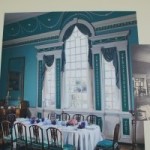 Also interesting were the paint colors. I had never actually thought about it but learned on the tour that color pigments for paint were usually ordered from England. These would be dry pigments, very, very expensive, and they needed to be carefully ground to a fine powder and mixed into the paint, homemade of course, on-site. Because of the high cost of pigment, usually only rooms that would used by visitors as well as family were painted in bright colors– the rest would either be very lightly tinted, white or beige. Green and blue were highly prized, especially expensive pigments so naturally most of the main rooms in the mansion are varying shades of blues and greens, Washington apparently being especially fond of green which he said was “restful to the eye”. The craftsmanship of the interior moldings and mantel carvings is just amazing, as is the elaborate palladian window in the full house-width dining room. Like Thomas Jefferson, Washington apparently loved the new and interesting, especially if it was useful. I found his combination “chair and fan” most unique, a chair with a pole behind it attached to a pedal on the floor. The square of cloth attached to top of the pole would then fan the occupant of the chair as he pumped the floor pedal.
Also interesting were the paint colors. I had never actually thought about it but learned on the tour that color pigments for paint were usually ordered from England. These would be dry pigments, very, very expensive, and they needed to be carefully ground to a fine powder and mixed into the paint, homemade of course, on-site. Because of the high cost of pigment, usually only rooms that would used by visitors as well as family were painted in bright colors– the rest would either be very lightly tinted, white or beige. Green and blue were highly prized, especially expensive pigments so naturally most of the main rooms in the mansion are varying shades of blues and greens, Washington apparently being especially fond of green which he said was “restful to the eye”. The craftsmanship of the interior moldings and mantel carvings is just amazing, as is the elaborate palladian window in the full house-width dining room. Like Thomas Jefferson, Washington apparently loved the new and interesting, especially if it was useful. I found his combination “chair and fan” most unique, a chair with a pole behind it attached to a pedal on the floor. The square of cloth attached to top of the pole would then fan the occupant of the chair as he pumped the floor pedal.
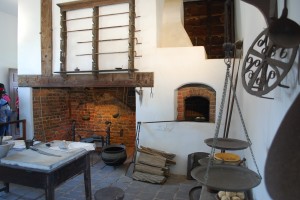 As is evident from this photo, Martha Washington oversaw quite the state-of-the-art kitchen– for her day, she had the most advanced appliances and implements that money could buy or skills could fashion. ( This included a brand new “automatic” rotissary, an appliance involving a chain attached to a fan placed up in the fireplace flue. The rising heat then turned the fan blades, which then turned the chain, which then turned the spit. This was revolutionary, making it possible to roast on a spit without having a person whose primary job would be just to turn the spit. Martha had a reputation as a generous and patient hostess– apparently it was not unusual after the War and especially after the Presidency, for all sorts of very important people to come to Mt. Vernon to pay their respects, by the hundreds, making Mt. Vernon one of the most visited homes in the new nation ! In one year there were over 400 guests to Mt. Vernon, most of whom stayed several days and possibly longer. Because of this, a great deal of her time was spent planning the meals to be served to guests. ( She was also in charge of distilling the household medicines, had a special, tiny still for that purpose and possessed a sought-after recipe for chapstick, called lip balm back in the day, Walgreen’s being a few hundred years in the future.)
As is evident from this photo, Martha Washington oversaw quite the state-of-the-art kitchen– for her day, she had the most advanced appliances and implements that money could buy or skills could fashion. ( This included a brand new “automatic” rotissary, an appliance involving a chain attached to a fan placed up in the fireplace flue. The rising heat then turned the fan blades, which then turned the chain, which then turned the spit. This was revolutionary, making it possible to roast on a spit without having a person whose primary job would be just to turn the spit. Martha had a reputation as a generous and patient hostess– apparently it was not unusual after the War and especially after the Presidency, for all sorts of very important people to come to Mt. Vernon to pay their respects, by the hundreds, making Mt. Vernon one of the most visited homes in the new nation ! In one year there were over 400 guests to Mt. Vernon, most of whom stayed several days and possibly longer. Because of this, a great deal of her time was spent planning the meals to be served to guests. ( She was also in charge of distilling the household medicines, had a special, tiny still for that purpose and possessed a sought-after recipe for chapstick, called lip balm back in the day, Walgreen’s being a few hundred years in the future.)
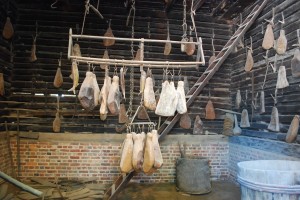 Martha Washington was especially famous for her delicious hams, soaked first in her special curing recipe and then slowly smoked to perfection in the large smoke house just off the kitchen. A ham was served everyday, boiled and/or baked, along with other meats and poultry and fruits and vegatables from their gardens and orchard. Apparently Martha’s signature desssert was a cake called the “Great Cake” ( I’m guessing for size as well as taste ). According to the tour guide, guests and family alike longed for this cake, the recipe for which included copious quanities of brandy and Medeira wine, needed 2 hours to bake and began: “Take 40 eggs….” The “Great Cake” was often served not only at dinner but also at her well-known “afternoon teas”, enjoyed in good weather on the rear veranda overlooking the wide sweep of the Patomac River. Ships and boats of all sizes plyed these broad blue saltwaters as Washington and his guests, family and friends relaxed in the veranda’s 40 Windsor chairs. Similar Windsor chairs are on the veranda still, available to the public to rest a bit and to enjoy the commanding view from the Mansion, which is sited atop a high hill with the dramatic river view framed by the trees below the hill, carefully planted specifically for that purpose by Washington. ( Actually, after walking and walking, it is truly delightful to be able to relax on the veranda in one of those chairs and just soak in the postcard-like scene.)
Martha Washington was especially famous for her delicious hams, soaked first in her special curing recipe and then slowly smoked to perfection in the large smoke house just off the kitchen. A ham was served everyday, boiled and/or baked, along with other meats and poultry and fruits and vegatables from their gardens and orchard. Apparently Martha’s signature desssert was a cake called the “Great Cake” ( I’m guessing for size as well as taste ). According to the tour guide, guests and family alike longed for this cake, the recipe for which included copious quanities of brandy and Medeira wine, needed 2 hours to bake and began: “Take 40 eggs….” The “Great Cake” was often served not only at dinner but also at her well-known “afternoon teas”, enjoyed in good weather on the rear veranda overlooking the wide sweep of the Patomac River. Ships and boats of all sizes plyed these broad blue saltwaters as Washington and his guests, family and friends relaxed in the veranda’s 40 Windsor chairs. Similar Windsor chairs are on the veranda still, available to the public to rest a bit and to enjoy the commanding view from the Mansion, which is sited atop a high hill with the dramatic river view framed by the trees below the hill, carefully planted specifically for that purpose by Washington. ( Actually, after walking and walking, it is truly delightful to be able to relax on the veranda in one of those chairs and just soak in the postcard-like scene.)
 Martha Washington had inheirited a rare family treasure, an extensive handwritten cookbook, which she received in 1749 and kept until 1799, when she gifted this heirloom to her grandaughter, Nelly Custis. This unique manuscript was brought back to life in a 1981 edition from the Columbia University Press, edited by the late Karen Hess, entitled “Martha Washington’s Booke of Cookery and Booke of Sweetmeats” . It is a marvelous, detailed glimpse into not just the art of cooking of that era but into its social customs and manners. ( It’s worth twice the price just to read the recipes for some of the various puddings, recipes with titles like how to make: “A Marrow Pudding”, A Bak’d Almond Pudding, An Almond Pudding To Boyle, A Haggis Pudding, A White Pudding, A Curd Pudding, A Quakeing Pudding, A Light Pudding, A Bagg Pudding, A Fryde Pudding, A Hearbe Pudding, A Good Pudding, A Very Good Pudding and, last but not least, how To Make A Pudding In A Loaf “. ) Another terific book about food and entertaining at Mt. Vernon is “Dining With The Washingtons: Historic Recipes, Entertaining and Hospitality From Mount Vernon” edited by Stephen A. McLeod, from the University of North Carolina Press. Both books are available at the extensive Mt. Vernon gift shop, either would make a nice gift for a friend interested in culinary history or, in my case, for oneself.
Martha Washington had inheirited a rare family treasure, an extensive handwritten cookbook, which she received in 1749 and kept until 1799, when she gifted this heirloom to her grandaughter, Nelly Custis. This unique manuscript was brought back to life in a 1981 edition from the Columbia University Press, edited by the late Karen Hess, entitled “Martha Washington’s Booke of Cookery and Booke of Sweetmeats” . It is a marvelous, detailed glimpse into not just the art of cooking of that era but into its social customs and manners. ( It’s worth twice the price just to read the recipes for some of the various puddings, recipes with titles like how to make: “A Marrow Pudding”, A Bak’d Almond Pudding, An Almond Pudding To Boyle, A Haggis Pudding, A White Pudding, A Curd Pudding, A Quakeing Pudding, A Light Pudding, A Bagg Pudding, A Fryde Pudding, A Hearbe Pudding, A Good Pudding, A Very Good Pudding and, last but not least, how To Make A Pudding In A Loaf “. ) Another terific book about food and entertaining at Mt. Vernon is “Dining With The Washingtons: Historic Recipes, Entertaining and Hospitality From Mount Vernon” edited by Stephen A. McLeod, from the University of North Carolina Press. Both books are available at the extensive Mt. Vernon gift shop, either would make a nice gift for a friend interested in culinary history or, in my case, for oneself.
 Time was unfortunately too short to see many of the amazing exhibits in the museum/education center which is the exit building but we did get to see George Washington’s famous false teeth. These were held in the mouth by springs, quite painful no doubt, and the video on how these dentures were manufactured leads one to a great appreciation of modern dentistry. But most interesting to me was the exhibit which explained how state of the art technology had been used to create facial and body models of what Washington likely looked like in his younger days, before any portraits had been painted of him. There is an exhibit of him as a young surveyor and as a middle aged soldier atop his horse, these models are believed to be very close to his true appearance at those ages, a tall, thin, very attractive man. And then, time to go but wanting to come back soon to see everything we had missed. P.S. For animal lovers out there, Washington loved animals too, especially dogs, whom he often gave whimsical names. When he became General of the Revolutionary Army, he took his favorite, Sweetlips, along with him leaving True Love and Mopsey behind ! P.P.S. Lots of fascinating info at www.mountvernon.org , www.gwpapers.virginia.edu , and www.marthawashington.us .
Time was unfortunately too short to see many of the amazing exhibits in the museum/education center which is the exit building but we did get to see George Washington’s famous false teeth. These were held in the mouth by springs, quite painful no doubt, and the video on how these dentures were manufactured leads one to a great appreciation of modern dentistry. But most interesting to me was the exhibit which explained how state of the art technology had been used to create facial and body models of what Washington likely looked like in his younger days, before any portraits had been painted of him. There is an exhibit of him as a young surveyor and as a middle aged soldier atop his horse, these models are believed to be very close to his true appearance at those ages, a tall, thin, very attractive man. And then, time to go but wanting to come back soon to see everything we had missed. P.S. For animal lovers out there, Washington loved animals too, especially dogs, whom he often gave whimsical names. When he became General of the Revolutionary Army, he took his favorite, Sweetlips, along with him leaving True Love and Mopsey behind ! P.P.S. Lots of fascinating info at www.mountvernon.org , www.gwpapers.virginia.edu , and www.marthawashington.us .



(Posted by Marlene Cree, licensed Virginia agent with Blue Heron Realty Co., 7134 Wilsonia Neck Dr., Machipongo, VA)
 What do a Shriner’s Parade, a crab skiff race, a fishing boat docking contest, paintings of whimsical mermaids and prancing horses have in common ? Surprisingly, they were all a part of a new Eastern Shore Virginia festival, the 2012 Clam Slam in Cape Charles, an inaugural event held last Friday, Saturday and Sunday. The Clam Slam blasted off Friday evening at the harbor with a huge Harbor Party featuring live rock/blues music music from 6-10 pm performed by John Baldwin and the Original Sinners, a well-known Virginia Beach band. I’m still a Glenn Miller-Tommy Dorsey-Benny Goodman-Artie Shaw fan myself but I’ve spoken to several people who went Friday night and commented that they really enjoyed the music.
What do a Shriner’s Parade, a crab skiff race, a fishing boat docking contest, paintings of whimsical mermaids and prancing horses have in common ? Surprisingly, they were all a part of a new Eastern Shore Virginia festival, the 2012 Clam Slam in Cape Charles, an inaugural event held last Friday, Saturday and Sunday. The Clam Slam blasted off Friday evening at the harbor with a huge Harbor Party featuring live rock/blues music music from 6-10 pm performed by John Baldwin and the Original Sinners, a well-known Virginia Beach band. I’m still a Glenn Miller-Tommy Dorsey-Benny Goodman-Artie Shaw fan myself but I’ve spoken to several people who went Friday night and commented that they really enjoyed the music.
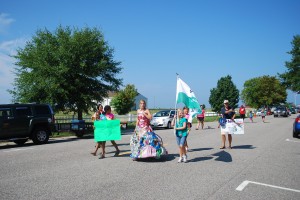 10am Saturday morning brought a complete change of pace as the Shriner’s Parade and Car Show. led by the smartly stepping Color Guard from the US Coast Guard’s Cape Charles Station, began winding its way along Bay Avenue and then down Mason Avenue. Following was a colorful assortment of participants including the ever popular fire trucks from Cape Charles and nearby Cheriton throwing candies to the crowd and then what I think was litttle Miss Chesapeake Bay. Everyone loved the crab racing skiffs which would be struting their stuff in the harbor later in the day, a colorful collection of oranges, greens and blues, rolling past sidewalks crowded with on-lookers.
10am Saturday morning brought a complete change of pace as the Shriner’s Parade and Car Show. led by the smartly stepping Color Guard from the US Coast Guard’s Cape Charles Station, began winding its way along Bay Avenue and then down Mason Avenue. Following was a colorful assortment of participants including the ever popular fire trucks from Cape Charles and nearby Cheriton throwing candies to the crowd and then what I think was litttle Miss Chesapeake Bay. Everyone loved the crab racing skiffs which would be struting their stuff in the harbor later in the day, a colorful collection of oranges, greens and blues, rolling past sidewalks crowded with on-lookers.
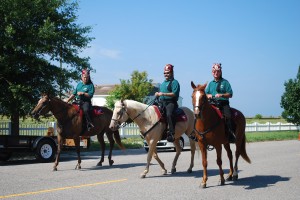 But of course it was the Shriners who highlighted the day, going all-out as usual in their efforts to raise money for their 22 hospital network where children are treated for free for a wide variety of very serious issues, including burns. Dressed in costume, the Shriner contingent led off with marchers, then a good sized marching band attired in teal slacks, white shirts, gold cummberbunds and their traditional red fezes, playing with plenty of volume and enthusiasm, followed by their top attractions, horses, clowns, mini-trucks and of course, the laugh-out-loud, crazy-driving miniture cars, probably the Shriners most famous parade unit.
But of course it was the Shriners who highlighted the day, going all-out as usual in their efforts to raise money for their 22 hospital network where children are treated for free for a wide variety of very serious issues, including burns. Dressed in costume, the Shriner contingent led off with marchers, then a good sized marching band attired in teal slacks, white shirts, gold cummberbunds and their traditional red fezes, playing with plenty of volume and enthusiasm, followed by their top attractions, horses, clowns, mini-trucks and of course, the laugh-out-loud, crazy-driving miniture cars, probably the Shriners most famous parade unit.
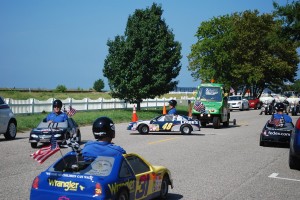 Envision exuberant drivers, stuffed into tiny cars barely big enough to hold them, careening around in apparently randomly wild configurations. Further imagine what appears to be total mayhem, with these big guys in minuture cars, zipping every which way but Sunday, about 6 ways on this 2 way street, all to huge laughs from an appreciative audience and you’ve pretty much got the picture. The clowns were tons of fun too- dressed up like Beverly Hillbillies, one of the fellows was doing his antics in bare feet. Given that hot, hot pavement, I’d say, Wow, that’s really dedication. Following all of that fun, a string of sweet antique cars. A fellow standing beside me kept pointing to one yellow beauty, saying I had one just like that, exactly like that just as the Kedive motorcycle group roared into view, first you hear them, then you see them.
Envision exuberant drivers, stuffed into tiny cars barely big enough to hold them, careening around in apparently randomly wild configurations. Further imagine what appears to be total mayhem, with these big guys in minuture cars, zipping every which way but Sunday, about 6 ways on this 2 way street, all to huge laughs from an appreciative audience and you’ve pretty much got the picture. The clowns were tons of fun too- dressed up like Beverly Hillbillies, one of the fellows was doing his antics in bare feet. Given that hot, hot pavement, I’d say, Wow, that’s really dedication. Following all of that fun, a string of sweet antique cars. A fellow standing beside me kept pointing to one yellow beauty, saying I had one just like that, exactly like that just as the Kedive motorcycle group roared into view, first you hear them, then you see them. Next up, horses and riders from Triple M Ranch. Located just outside Cape Charles on 150 acres overlooking historic King’s Creek, a saltwater inlet from the Chesapeake Bay, Triple M has a dedicated group of riders and they have consistantly added a lot of interest to local events by bringing their gorgeous mounts to participate. Their horses were so cute last Christmas at the Cape Charles Grand Illumination at Central Park. Adorned in holiday bells, red bows, plush reindeer horns, red and green saddle blankets, etc., they certainly brought a lot of extra smiles to that special evening. Following the horses, a cute golf cart sponsored by the Friends of the Cape Charles Library advertizing their book sale and then, last but definitely not least, a long string of antique Corvette’s, buffed and shiny, clearly well treated by their proud owners.
Next up, horses and riders from Triple M Ranch. Located just outside Cape Charles on 150 acres overlooking historic King’s Creek, a saltwater inlet from the Chesapeake Bay, Triple M has a dedicated group of riders and they have consistantly added a lot of interest to local events by bringing their gorgeous mounts to participate. Their horses were so cute last Christmas at the Cape Charles Grand Illumination at Central Park. Adorned in holiday bells, red bows, plush reindeer horns, red and green saddle blankets, etc., they certainly brought a lot of extra smiles to that special evening. Following the horses, a cute golf cart sponsored by the Friends of the Cape Charles Library advertizing their book sale and then, last but definitely not least, a long string of antique Corvette’s, buffed and shiny, clearly well treated by their proud owners.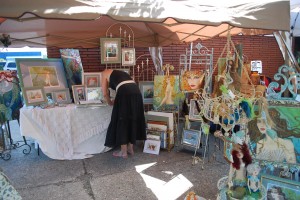
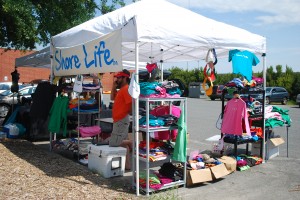 I didn’t have time to stick around for the other festivities down at the harbor which included games for kids, a horseshoe contest, a crab pot cork race and the wildly popular Smith Island crab skiff race. I did however take a quick stroll down Mason Avenue to see what the sidewalk art booths had on display this year. Looks of good stuff, paintings, crafts, political buttons, you-name-it, for sale along the sidewalk. And at the very end of the sidewalk appeared a little tent filled to the brim with the most adorable mermaid dolls and whimsical paintings, prints and original oils both, all beckoning me in, singing sweetly like the Sirens to Ulysses, come in, come in, see me, touch me, take me home with you…… Created by talented Shore artisit, Katherine Kiss, who said she has been working in the fanciful genre for a long time, the mermaid dolls were so absolutely gorgeous, I’d have loved to have bought every one !
I didn’t have time to stick around for the other festivities down at the harbor which included games for kids, a horseshoe contest, a crab pot cork race and the wildly popular Smith Island crab skiff race. I did however take a quick stroll down Mason Avenue to see what the sidewalk art booths had on display this year. Looks of good stuff, paintings, crafts, political buttons, you-name-it, for sale along the sidewalk. And at the very end of the sidewalk appeared a little tent filled to the brim with the most adorable mermaid dolls and whimsical paintings, prints and original oils both, all beckoning me in, singing sweetly like the Sirens to Ulysses, come in, come in, see me, touch me, take me home with you…… Created by talented Shore artisit, Katherine Kiss, who said she has been working in the fanciful genre for a long time, the mermaid dolls were so absolutely gorgeous, I’d have loved to have bought every one !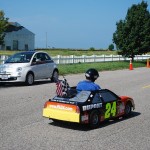
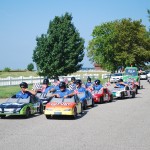



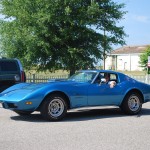
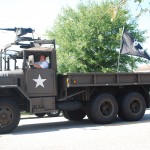
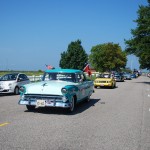
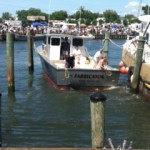
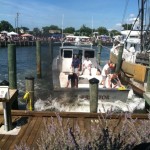
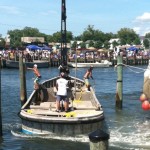



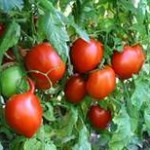
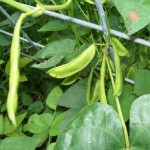

















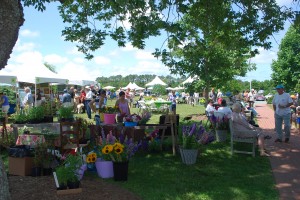
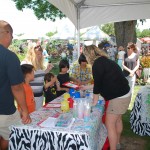
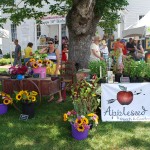
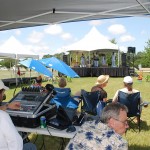

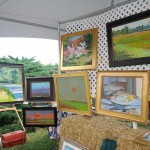
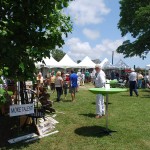


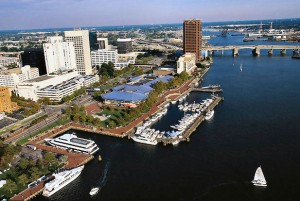

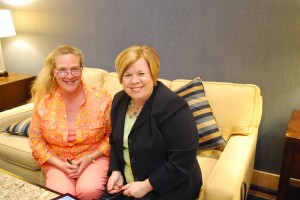
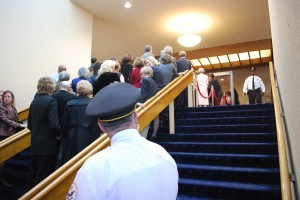

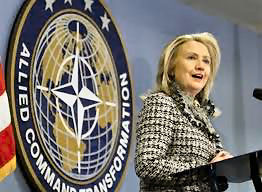
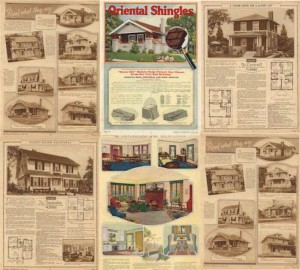
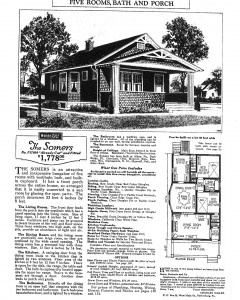
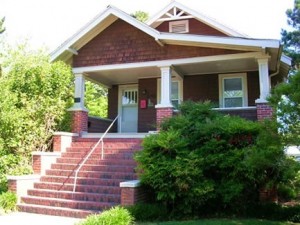
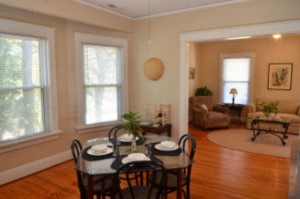
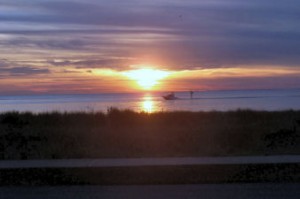

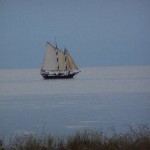


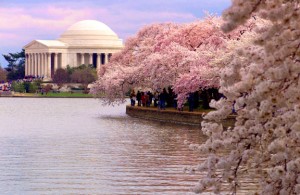
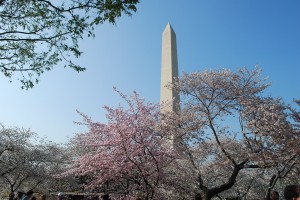
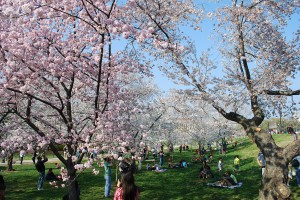



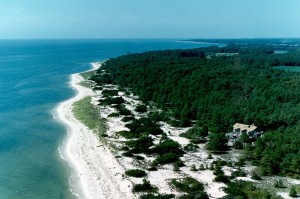

![Dining Room[1]](http://www.easternshorevablog.com/wp-content/uploads/2012/03/Dining-Room1-300x201.jpg)

![Den_Study[1]](http://www.easternshorevablog.com/wp-content/uploads/2012/03/Den_Study1-150x150.jpg)
![Bedroom[1]](http://www.easternshorevablog.com/wp-content/uploads/2012/03/Bedroom1-150x150.jpg)



